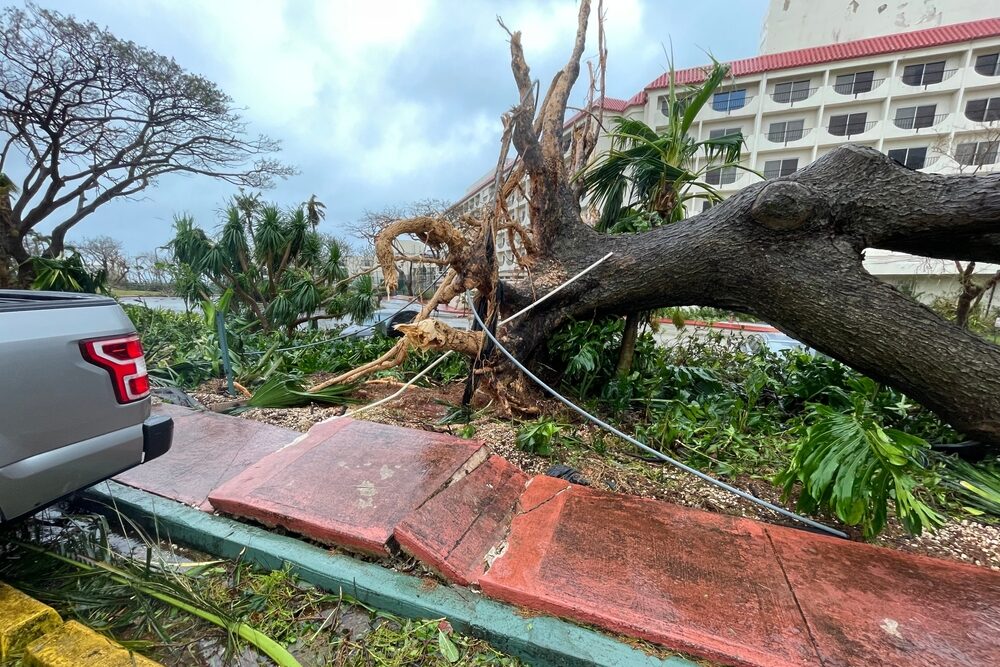The Occupational Safety and Health Administration (OSHA) announced June 2 it’s deploying workplace health and safety experts to the areas of Guam that were hit the hardest by Typhoon Mawar to protect the health and safety of recovery workers.
As part of recovery efforts in the U.S. territory, OSHA temporarily suspended programmed and planned enforcement inspections in heavily impacted areas. However, the agency retains the authority to perform inspections related to catastrophic incidents, employee complaints, fatalities, and incidents involving life-altering injuries, as well as where employers repeatedly expose employees to serious hazards during cleanup and recovery.
“OSHA safety and health experts on the ground in Guam will provide outreach and technical assistance needed to help people as they begin recovery work in areas most affected by Typhoon Mawar,” James Wulff, OSHA’s regional administrator, said in an agency statement. “People involved in storm recovery and cleanup must follow proper procedures to protect themselves from the many risks that exist after a natural disaster.”
OSHA’s outreach will focus on exposures to crushing, electrical, fall, heat illness, and struck-by hazards, as well as the risks of carbon monoxide poisoning caused by using electrical generators.
OSHA, Safety Council of Greater St. Louis sign alliance
OSHA and the Safety Council of Greater St. Louis signed an alliance to promote workplace safety and health topics among council members in the agricultural, construction, and general industry sectors, the agency announced May 31.
The alliance will develop a sample policy for employers focused on encouraging worker engagement in hazard identification, as well as a best practices document for training and engaging workers on hazard identification and control, according to OSHA.
The alliance also will attempt to engage safety council stakeholders with OSHA’s regional and area offices to address health and safety issues, including fall prevention, heat illness prevention, and workplace mental health awareness.
“This alliance will promote the development of comprehensive safety and health programs for members of the Safety Council of Greater St. Louis and increase access to training resources while focusing on hazards such as falls and heat illness prevention as well as increasing awareness of workplace mental health,” Bill McDonald, OSHA’s St. Louis area director, said in an agency statement.
OSHA offers $12.7 million in grants
OSHA recently announced the availability of more than $12.7 million in funding for training programs designed to promote workplace health and safety. The Susan Harwood Training Grant Program offers funding for Targeted Topic Training, Training and Educational Materials Development, and new Capacity Building training grants for nonprofit organizations.
The grants support recipients’ efforts to provide instructor-led, in-person; hands-on; and remote training for workers and employers in small businesses; industries with high injury, illness, and fatality rates; and vulnerable workers who are underserved, have limited English proficiency, or are temporary workers.
Funding will be available for:
- Targeted Topic Training, supporting educational programs that identify and prevent OSHA-designated workplace safety and health hazards.
- Training and Educational Materials Development, supporting the development of quality, classroom-ready training and educational materials on identifying and preventing workplace hazards.
- Capacity Building, supporting organizations in developing new training programs to assess training needs and plan for full-scale safety and health education programs, expanding their capacity to provide workplace safety and health training, education, and related assistance for workers and employers.
A recording of the agency’s webinar “How to Prepare a Competitive Susan Harwood Training Grant Application” is available on the Harwood Training Grant Program webpage.

